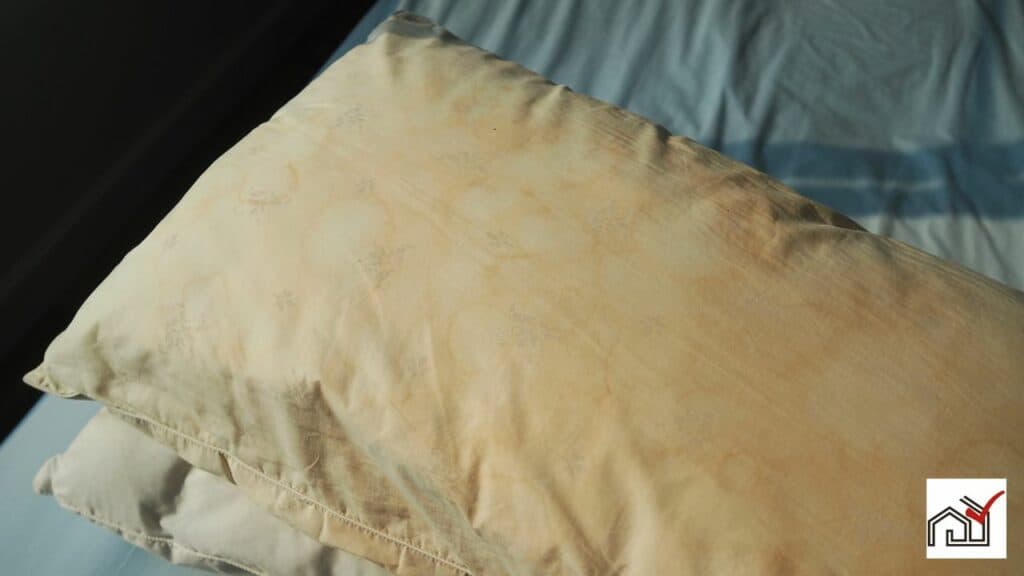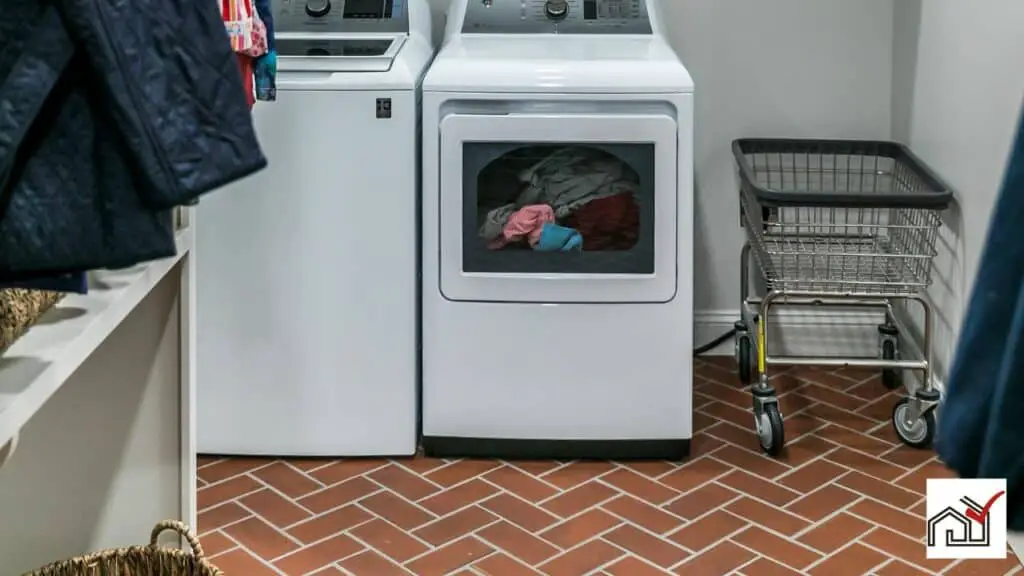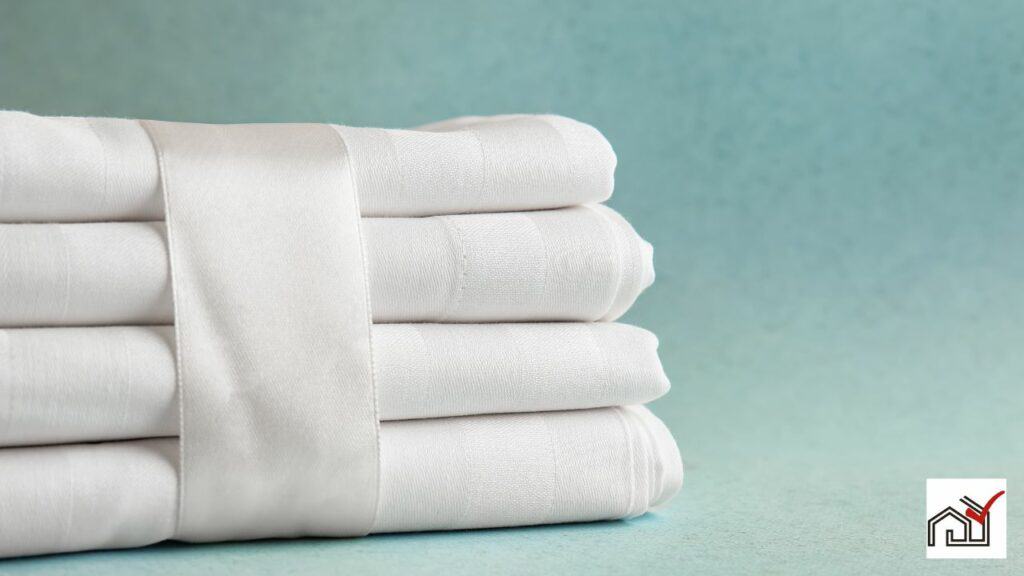Pillows turn yellow over time due to bodily fluids like oils, sweat, and saliva, along with shed skin cells and hair products. These substances react with the pillow materials and undergo discoloration when exposed to air and light.
Regular washing and using pillow covers can slow down yellowing. However, if yellowing persists, it may be time to replace the pillow for cleanliness.
Unveiling the Yellow Mystery
Body fluids primarily cause the yellow stains on pillows. These stains can indicate dust mites, bacteria, and allergens.
The natural oils from the skin, particularly from the face, stain pillowcases and pillows. Sweat increases the problem, as the salts in sweat can further discolor the fabric.
Shedding dead skin cells adds to the accumulation of moisture and oils, which can attract bacteria and worsen yellowing.
Using pillow protectors can prevent moisture and oils from reaching the pillow. Washing pillowcases and pillows as recommended can help maintain their condition and reduce staining.
The Sweat Factor
Sweat significantly contributes to pillow yellowing as it introduces moisture and salts into the pillow fabric, leading to discoloration. Increased sweating due to warm sleeping environments or heat-retaining bedding can intensify this effect, causing more pronounced yellow stains on pillows.
The salt in sweat can chemically react with pillow materials, resulting in a yellow color. Additionally, sleeping with wet hair can increase moisture, exacerbating stain development.
Saliva from individuals who drool during sleep can also cause pillows to yellow. External factors like face creams and hair products can transfer to pillows, adding to the discoloration.
To prevent pillow yellowing, using a pillow protector is advisable. It acts as a barrier, protecting the pillow from direct contact with moisture, salts, and other substances that lead to yellowing, thereby maintaining the pillow's cleanliness.
Hair and Oil Residues
Hair and oil residues contribute to the yellowing of pillows. Body oils and beauty products from skin and hair transfer to pillows during sleep, causing discoloration over time.
Open-mouth sleeping or drooling, particularly from allergies, speeds up the yellowing due to the combination of saliva and oils. Wet or damp hair at bedtime also increases moisture and oil transfer to pillows, leading to stains.
Using face creams and beauty products before sleep may cause pillow stains, as these products often contain oils that transfer onto bedding.
To avoid yellowing, use pillow protectors to shield against direct contact with oils and wash bedding regularly as per care instructions. These steps help keep pillows clean and prevent yellow stains.
Beauty Products' Impact
Nightly beauty routines often involve applying creams that can stain pillowcases. These stains result from product residues mixed with body oils, which can be hard to remove and may reduce a pillow's lifespan and cleanliness.
Applying products earlier in the evening can allow the skin to absorb them, reducing transfer to pillows. Using pillow protectors and washing pillowcases frequently can also prevent yellowing.
Choosing moisture-wicking, less absorbent pillowcase materials is recommended for those who use beauty products before bed. These measures can help maintain the condition and appearance of pillows.
Safety of Yellowed Pillows
Yellowed pillows are not automatically unsafe if they are cleaned regularly. Yellow stains usually come from sweat, oils, and bodily fluids. These stains are not harmful by themselves but can attract bacteria, dust mites, and other contaminants that might be harmful if the pillow is not washed properly.
The safety of a yellowed pillow depends on thorough cleaning and maintenance. A yellow pillow should be washed to remove allergens and bacteria. If not cleaned, it can harbor dust mites, which may worsen allergies and asthma.
Wet hair before bed can make pillows yellow faster, as moisture encourages mold and mildew growth, which are health risks. If a pillow remains yellow and smells bad after washing, it should be replaced. A persistent bad odor suggests it may be full of microorganisms.
Stain Removal Techniques
Effective stain removal techniques are important for maintaining clean pillows. First, check the pillow's care label for washing instructions. For small yellow stains, create a paste with baking soda and water, apply it to the stain, rub it gently, and let it sit before washing.
If the pillow is machine washable, use a preferred stain remover with detergent. Add bleach and borax for tough stains, but only if the pillow material is bleach-safe. If not, use a color-safe alternative.
After washing, pillows must be completely dry before use to prevent mold and mildew. Drying in the sun can help remove any remaining stains.
Regular washing, using pillow protectors, and quick spill responses can prevent yellowing and maintain pillow hygiene.
Preventative Measures
Pillows often become yellow due to the accumulation of body oils, sweat, and fluids. To prevent this, use a pillow protector to reduce staining and choose a moisture-resistant, high-quality pillowcase. Wash pillowcases weekly with bed sheets to prevent sweat and oil build-up.
Protect your pillow with a protector and consider a mattress protector for added defense. Wash pillows every four to six months, following the manufacturer's care instructions. Prevent moisture transfer by ensuring hair is dry before bed.
These steps can help maintain the cleanliness and extend the life of your pillows.
Time for a New Pillow
Regular upkeep can make a pillow last longer, but if it turns significantly yellow, loses its shape, or triggers allergies, it may be time for a new one. Pillows typically need replacing every one to two years to maintain comfort and hygiene, as they can collect bacteria and dust mites. Persistent yellow stains suggest it's time to discard the pillow.
To prevent yellowing, use pillow protectors and wash pillows regularly. Nonetheless, when they become too flat or uncomfortable, consider buying a new one to enhance sleep quality and health. While it's important to save money, the health benefits of a clean, supportive pillow justify the cost every couple of years.





